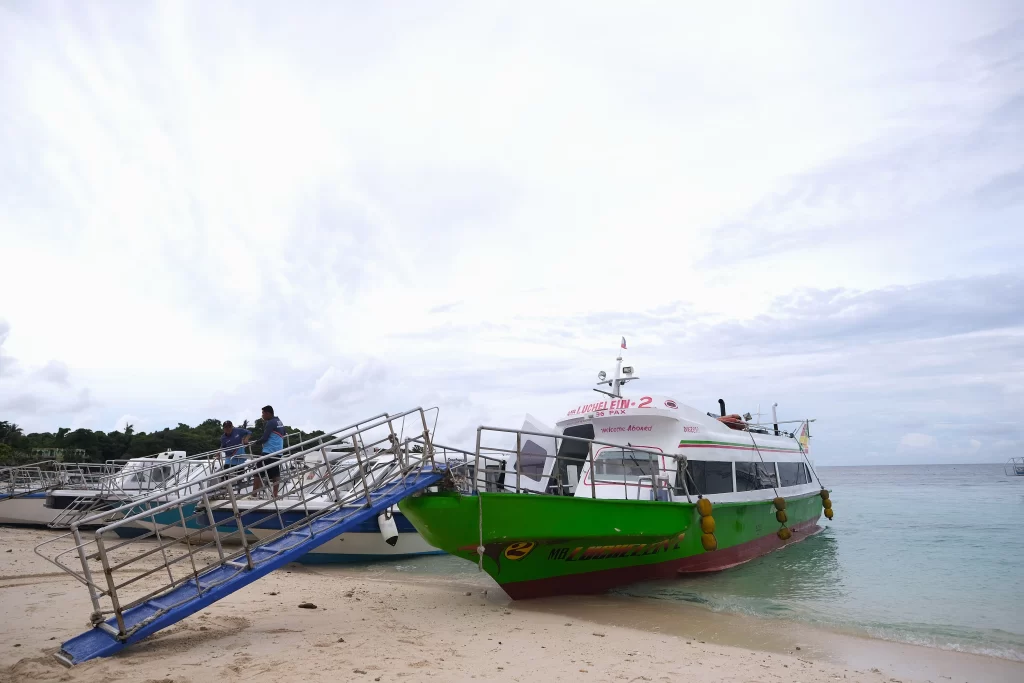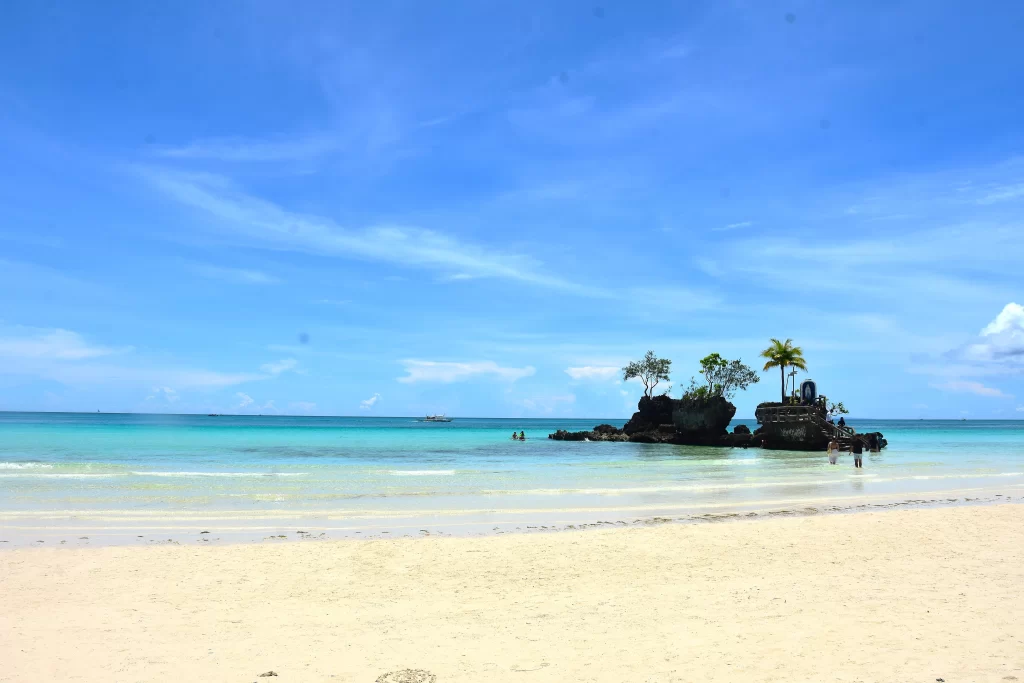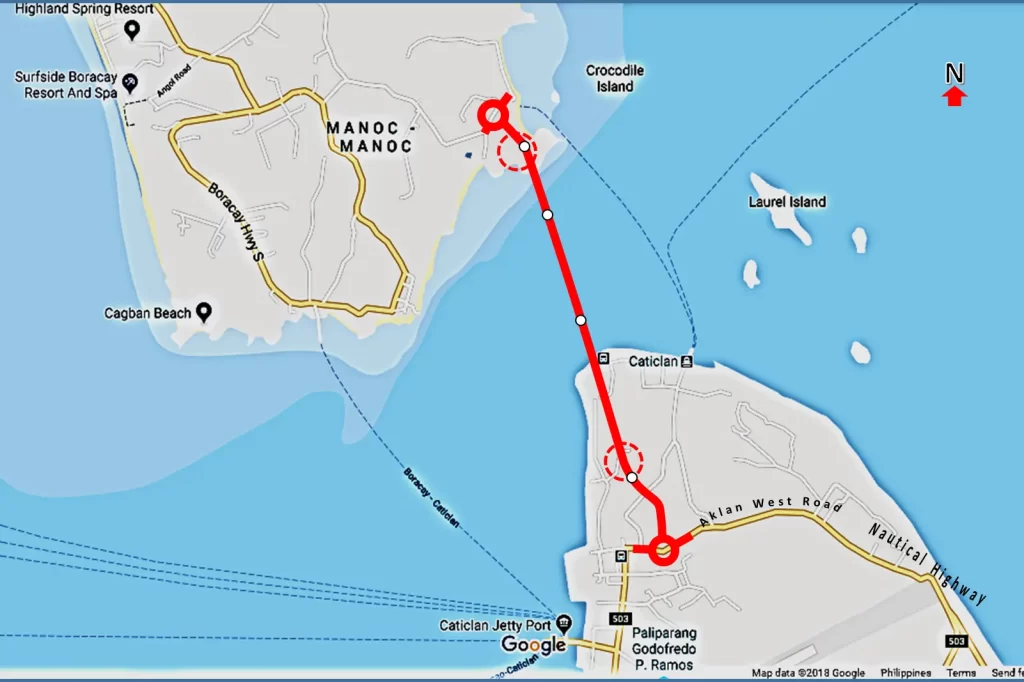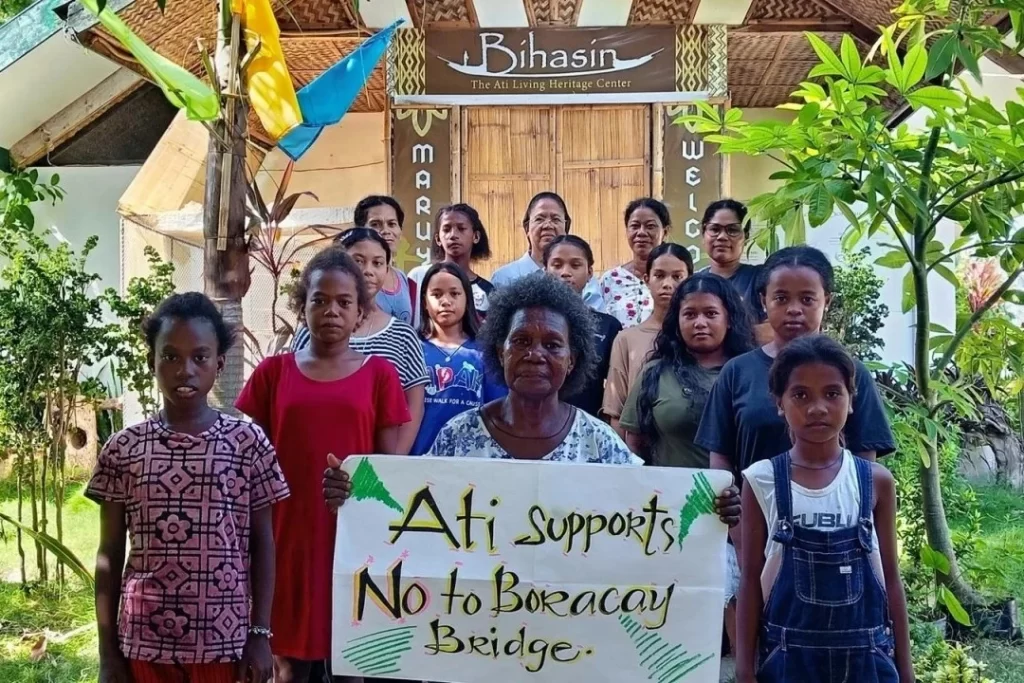What is the Boracay Bridge Project and Why It Matters
Early Project Confirmation: The Boracay Bridge Project is a P8 billion infrastructure initiative proposed by San Miguel Holdings Corporation to connect Boracay Island to mainland Panay through a 2.54-kilometer bridge. This comprehensive guide covers project specifications, approval timeline, environmental considerations, and stakeholder positions as the Department of Public Works and Highways prepares for a final decision by July 2025.
Boracay Bridge Project: Key Details and Specifications
The Boracay Bridge Project is a ₱8 billion infrastructure plan that will connect Caticlan to Boracay Island through a 1.2-kilometer bridge. Designed to improve accessibility, reduce travel time, and support tourism, the project also raises discussions on sustainability and environmental impact.

Boracay Bridge Project Specifications
The proposed bridge spans 2.54 kilometers connecting Boracay Island to Caticlan in Malay, Aklan province on the Panay mainland. San Miguel Corporation submitted this unsolicited proposal with a budget of P7.95-P8.01 billion under Republic Act No. 11966, the updated Public-Private Partnership Code.
The bridge design features limited vehicular access rather than full highway connectivity, preventing traffic congestion on Boracay Island. Key specifications include dedicated loading and unloading zones, controlled entry points, and supporting facilities on both ends to manage the flow of people, goods, and waste without overwhelming the island’s transport ecosystem.
The Department of Public Works and Highways emphasizes this is not a standard highway but a carefully managed connection designed to facilitate essential services, emergency response, and waste management while preserving Boracay’s tourism appeal.
Boracay Bridge Project Context
This bridge connects to the Philippines’ broader infrastructure development strategy under the PPP framework, addressing Boracay’s unique geographical challenges. Currently, nearly 500 boats operated by local cooperatives provide the sole connection between the island and mainland, creating logistical inefficiencies and capacity constraints during peak tourism seasons.
The project relationship extends to Boracay’s critical waste management needs, emergency evacuation capabilities during typhoons, and the efficient transport of medical supplies and essential goods that currently depend entirely on marine transport, subject to weather conditions.

How the Boracay Bridge Could Impact Philippine Tourism and Infrastructure
The strategic value lies in improving access to one of the Philippines’ premier tourist destinations while addressing operational challenges that have plagued the island for years. Boracay generates significant tourism revenue, but current ferry-dependent transportation creates bottlenecks that limit efficient movement of tourists, residents, and essential services.
Current transportation limitations between Boracay and mainland rely entirely on motorized outrigger boats and ferries, which face cancellations during adverse weather, creating supply disruptions and emergency response challenges. The island’s previous temporary closure in 2018 for environmental rehabilitation highlighted the need for reliable infrastructure to support sustainable tourism.
The project aims to provide all-weather connectivity for essential goods, medical supplies, and waste transport, eliminating delays that currently occur due to sea conditions. This reliable connection could improve tourism management and provide crucial evacuation routes during natural disasters, addressing a critical vulnerability for the island’s residents and visitors.
Boracay Bridge Project Timeline and Major Milestones
| Phase | Timeline | Status | Key Details |
|---|---|---|---|
| Initial Proposal | 2019 | Completed | San Miguel Holdings Corporation submitted unsolicited proposal |
| Government Review | 2024-2025 | Ongoing | DPWH evaluation and coordination with Aklan local government |
| Swiss Challenge Process | 2025 | Active | Competitive challenge phase open to other bidders |
| Final Decision | July 2025 | Pending | Expected decision on project approval and selected proponent |
| Construction Start | TBD | Awaiting approval | Dependent on final government decision and environmental clearances |
Compared to other major Philippine bridge projects, the P8 billion budget and 2.54-kilometer length position this as a significant infrastructure investment, though smaller in scale than projects like the Cebu-Cordova Link Expressway but carrying higher environmental and social sensitivities due to Boracay’s protected status.

Step-by-Step Guide to the Boracay Bridge Approval Process
Step 1: Initial Proposal and Unsolicited Submission
San Miguel Holdings Corporation submitted their 2019 unsolicited proposal to the Department of Public Works and Highways under the newly updated Republic Act No. 11966. This law allows private entities to propose infrastructure projects directly to government agencies, initiating a structured review process.
The proposal included detailed technical specifications, environmental impact assessments, and financial projections demonstrating the project’s feasibility and potential benefits for Boracay’s connectivity challenges.
Step 2: Government Review and Swiss Challenge Process
The DPWH evaluation process involves coordination with Aklan local government units to ensure community acceptance and regulatory compliance. Public Works Secretary Manuel Bonoan confirmed initial approval from local government but emphasized the need for full LGU endorsement before proceeding.
The Swiss challenge mechanism allows competing proposals from other stakeholders, ensuring the government receives the best possible terms and technical solutions. This competitive process is currently ongoing, with other firms invited to match or improve upon San Miguel’s initial proposal.
Step 3: Community Consultation and Final Approval
Ongoing community consultations involve multiple stakeholders including local residents, business groups, environmental organizations, and affected ferry operators. These consultations address concerns about environmental impact, livelihood displacement, and project benefits.
Final approval requirements include securing endorsements from local officials, completing environmental clearances, and demonstrating adequate measures to protect affected communities, particularly the Caticlan-Boracay Transport Multi-Purpose Cooperative representing nearly 500 boatmen.
Boracay Bridge Project Controversies and Concerns
Environmental Impact: The Boracay Foundation Inc. and environmental groups strongly oppose the project due to concerns about coral reef damage and marine ecosystem disruption in the strait between Boracay and Caticlan. Experts warn that construction could disturb sediment, damage coral habitats, and alter tidal flow patterns.
Economic Displacement: Ferry operators and boatmen fear loss of livelihoods from the P500 million fleet modernization investment made by the Caticlan-Boracay Transport Multi-Purpose Cooperative. This cooperative represents over 500 boatmen and 40 boat owners who recently upgraded their vessels to comply with safety requirements.
Lack of Consultation: The Philippine Chamber of Commerce and Industry-Boracay cites insufficient public consultation, with local leaders including Governor Florencio Miraflores expressing concerns about rushing the approval process without adequate stakeholder engagement.
Pro Tip: Project proponents are addressing these concerns through design modifications emphasizing limited access rather than full vehicular connectivity, and exploring compensation plans for affected transport operators while maintaining the bridge’s environmental safeguards.

Boracay Bridge Project: Stakeholder Perspectives and Local Impact
Local ferry operators have invested heavily in modernizing their fleets, meeting government safety and environmental standards. This highlights the economic reliance of residents and stakeholders on the existing ferry transport system.
The proposed Boracay Bridge could reduce demand for ferry services, potentially affecting recent investments and displacing workers dependent on boat operations.
Stakeholder Positions:
Aklan Governor Florencio Miraflores is cautious about approving the project without protections for affected workers.
Acting Malay Mayor Frolibar Bautista supports the bridge but stresses the importance of community protection.
Ati Indigenous People groups call for proper consultation regarding impacts on their traditional fishing areas.
Possible Solutions:
Some suggestions include maintaining ferry services for tourists while using the bridge mainly for cargo, waste management, and emergency services. This strategy aims to preserve livelihoods while improving the connection between Boracay Island and the Panay mainland.
Final Overview of the Boracay Bridge Project
The Boracay Bridge Project represents a critical decision point for Philippine infrastructure development, balancing the P8 billion scope and 2.54-kilometer specifications against environmental and social considerations. The July 2025 decision timeline provides opportunity for thorough evaluation of all stakeholder concerns through the ongoing Swiss challenge process.
The project’s potential to transform Boracay accessibility while preserving the island’s tourism appeal depends on successful resolution of environmental impact concerns, protection of ferry operator livelihoods, and adequate community consultation. The limited-access design approach shows recognition of these challenges while attempting to address the island’s waste management and emergency response needs.
Key factors influencing the final decision include completing the competitive challenge process, securing full local government endorsement, and demonstrating adequate environmental safeguards to protect Boracay’s marine ecosystem. The project could set important precedents for infrastructure development in other ecologically sensitive tourist destinations across the Philippines.
Readers should follow DPWH announcements for the final decision and project updates, as this major infrastructure initiative will significantly impact one of the country’s most important tourism destinations and the communities that depend on it.
Frequently Asked Questions (FAQs)
The Department of Public Works and Highways will decide by July 2025 on the P8 billion project’s fate, following completion of the Swiss challenge process and community consultations.
The bridge will span 2.54 kilometers with limited vehicular access, controlled loading zones, and supporting facilities designed to prevent island congestion while facilitating essential services.
San Miguel Holdings Corporation proposed the P7.95-P8.01 billion project as an unsolicited proposal under the government’s Public-Private Partnership framework.
Opposition includes environmental concerns about coral reef damage, economic displacement of ferry operators who invested P500 million in fleet modernization, and insufficient public consultation with affected communities.
The bridge could significantly reduce ferry demand, potentially displacing nearly 500 boatmen and affecting cooperative members who recently modernized their vessels under government requirements.


No Comments on Boracay Bridge Project: Caticlan to Boracay